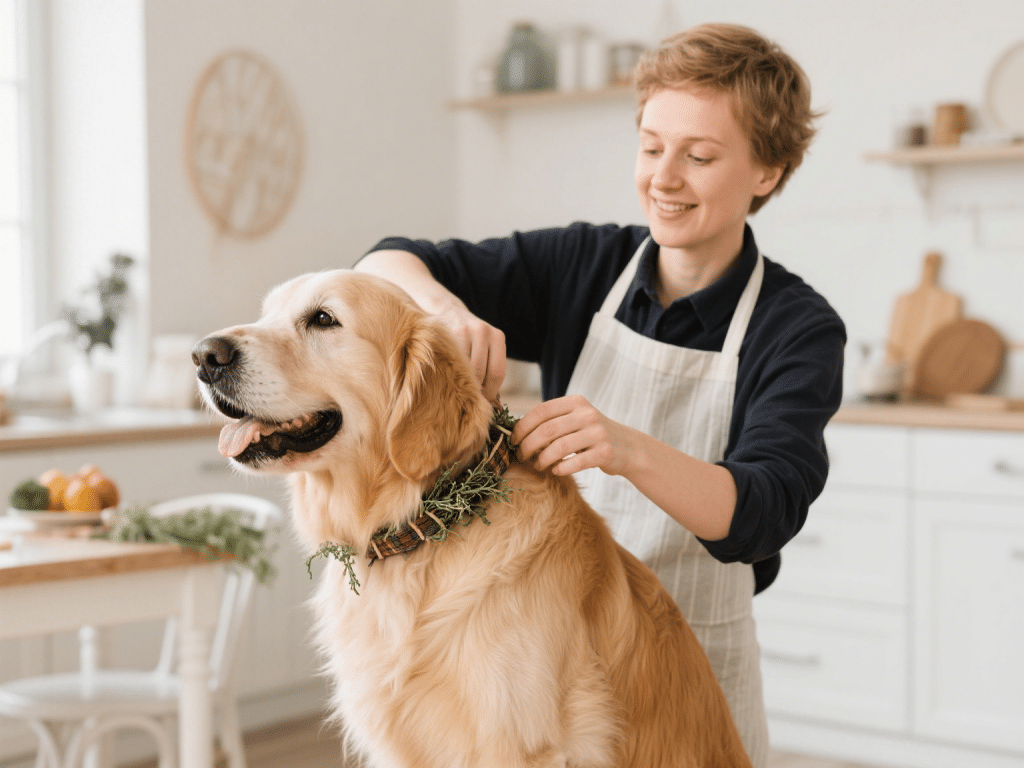
Fleas can turn a peaceful household into a scratching nightmare. Commercial flea collars often contain potent chemicals that some pet parents prefer to avoid. Drawing on over ten years’ experience as a holistic veterinary nurse, I’ll share three proven DIY recipes—each formulated with gentle, natural ingredients that repel fleas without toxic side effects. You’ll learn step-by-step how to prepare, apply, and maintain these collars for lasting protection.
1. Why Choose Homemade Flea Collars?
Chemical-Free: Avoid insecticides like permethrin.
Cost-Effective: Pantry staples and essential oils cost pennies per collar.
Customizable: Adjust scents and concentrations for sensitive pets.
2. Key Active Ingredients
Essential Oils: Rosemary, cedarwood, and lavender deter fleas by scent.
Carrier Oils: Fractionated coconut oil disperses and dilutes essential oils safely.
Herbs & Powders: Diatomaceous earth (food-grade) physically dehydrates fleas; dried neem leaf powder disrupts their life cycle.
3. Recipe A: Lavender-Rosemary Collar
4. Recipe B: Cedarwood-Neem Collar
5. Recipe C: Citrus Mint Collar for Cats
6. Safety Considerations
Patch Test: Apply a small bead to inner foreleg; watch for 24-hour irritation.
Oil Dilution: Do not exceed 1% total essential oil concentration for dogs, 0.5% for cats.
Supervision: Remove collar at first sign of redness or chewing.
7. Maintenance & Monitoring
Conclusion
DIY flea collars are an empowering way to protect pets naturally. By carefully selecting quality oils, following safe dilution guidelines, and monitoring your pet’s response, you can maintain a flea-free home without resorting to harsh chemicals.